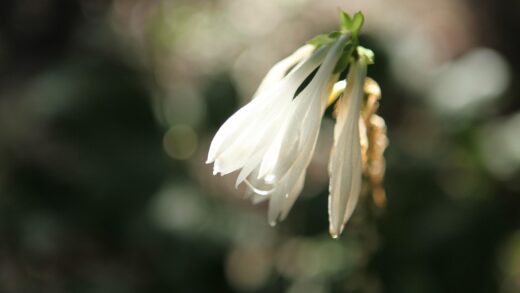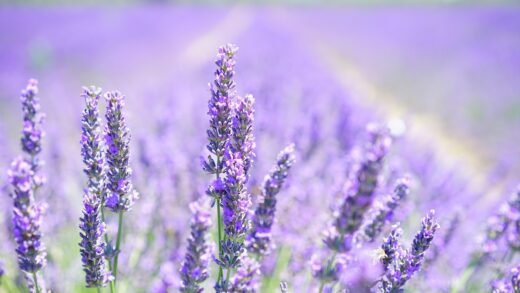The Golden Rose, known scientifically as Rosa xanthina, is a shrub of exceptional beauty originating from China, capable of being a unique splash of color in any garden with its early spring, vibrant yellow flowers. Its significance comes not only from the mass of its flowers but also from its remarkable undemanding nature and relatively good winter hardiness, making it attractive to garden enthusiasts. Nevertheless, for the plant to display its best form year after year and flower profusely, professional winter preparation is essential. This is especially true for young, freshly planted specimens, as well as those grown in the harsher climatic regions of our country or in windy, exposed locations, which will be grateful for the care.
The Golden Rose is a medium-sized, bushy shrub with an upright, then arching branch system that can reach a height of up to two meters. Its leaves are small, pinnately compound, and quite resistant to diseases, which simplifies plant protection tasks. Its main ornamental value comes from its single or semi-double, brilliant golden-yellow flowers that bloom in late April or early May, virtually covering the entire bush, even before the leaves emerge. Thanks to its natural habitat, which extends to the mountainous regions of Northern China and Korea, the plant is excellently adapted to cold winters. However, in its youth or for container-grown individuals, the root system can be more vulnerable to hard frosts.
The winter hardiness of plants is often determined by the internationally accepted USDA Plant Hardiness Zone Map, which is based on the average annual minimum winter temperatures. The Golden Rose can typically be grown safely from zone 4 to 9, meaning it can tolerate frosts as low as -34°C once properly established. Hungary’s climate mostly falls into zones 5b-7a, so a mature Golden Rose that has been in place for several years will survive the winter in most gardens without special protection. The challenge can be sudden temperature fluctuations, frosty, dry winds, and a lack of winter precipitation.
Therefore, even though the Golden Rose is fundamentally a tough, resilient variety, conscious winter preparation pays off. This care not only ensures the plant’s survival but also contributes to it sprouting more vigorously the following spring and its flowering being even richer and more spectacular. The steps of wintering act as a form of insurance against extreme weather anomalies and guarantee that this wonderful shrub can remain an ornament of our garden for many years to come. With proper preparations, we can minimize winter frost damage to the branches and protect the most sensitive part, the root collar.
Autumn preparation for successful wintering
Preparation for winter must begin in late summer and early autumn with proper nutrient supply. From the beginning of August, the use of high-nitrogen fertilizers should be avoided, as they stimulate shoot growth. The fresh, soft shoots that form at this time do not have enough time to mature and harden before winter sets in, making them easily damaged by frost. Instead, it is advisable to apply a potassium-rich, so-called autumn fertilizer in September, which promotes the maturation of the canes and strengthens the tissues, thereby significantly improving the plant’s frost tolerance.
Watering frequency must also be adjusted to the season as temperatures drop and days shorten. In autumn, gradually reduce the amount of irrigation water to avoid oversaturating the soil. Waterlogged soil can lead to root rot, especially during winter freeze-thaw cycles. However, before the ground freezes solid, a final, thorough, deep watering is extremely important. This ensures that the plant does not start the winter in a state of physiological drought, where it cannot absorb water from the frozen soil, yet the frosty wind continues to dry out the canes.
Many people wonder about autumn pruning, but the Golden Rose, like most once-blooming spring roses, should not be heavily pruned in the fall. Autumn pruning can also encourage the plant to produce new shoots that would freeze during the winter. During this period, only remove diseased, damaged, or dead branches; this is called sanitary pruning. The ideal time for shaping and rejuvenation pruning is immediately after the spring flowering, giving the plant enough time to develop the flowering canes for the following year.
Garden hygiene is a key element of autumn preparation. Before winter sets in, carefully collect and remove fallen leaves and other plant debris from under the rose bush. This debris provides an excellent overwintering site for the spores of various fungal diseases, such as black spot, as well as the eggs of pests. With this simple but important step, you can significantly reduce the risk of infections the following spring and help your rose start the growing season healthy and strong.
Practical steps and methods of wintering
The most important and simplest method for wintering a Golden Rose planted in the ground is protection through soil covering, also known as mulching. This method serves to insulate the root zone and the extremely sensitive root collar (the part where the roots and the shoot system meet). Apply a thick layer, about 15-25 centimeters, of organic materials such as leaf compost, straw, wood chips, or dry leaves around the base of the plant. Do not apply the mulch too early; the ideal time is after the first serious frosts but before the ground freezes completely solid, thus helping to retain the soil’s warmth.
Another effective and long-proven method is hilling up the rose bushes. This means piling soil, mature compost, or peat around the base of the plant in a mound about 20-30 centimeters high. This mound of earth forms an excellent insulating layer around the lowest buds and the root collar of the rose, protecting them from the harshest frosts and winter temperature fluctuations. The material used for hilling should be loose in structure so that it does not freeze into a single block of ice. In the spring, this mound will need to be carefully removed.
In colder, windier regions or for bushes in particularly exposed locations, it may also be necessary to protect the branch system. The goal here is not to keep the plant warm, but to prevent damage caused by winter sun and drying winds, such as bark splitting and desiccation (physiological drought caused by frost). For this purpose, you can use shade netting, burlap, or a special plant cover made of fleece, with which you can loosely wrap the shrub. It is important that the covering material is breathable so that moisture does not get trapped underneath, which could lead to fungal diseases.
Container-grown Golden Roses require special attention, as their root system is much more exposed to the cold, being hit by frost from all sides through the pot walls. The best solution is to move the potted plant to a sheltered, frost-free, but cool place for the winter, such as an unheated garage, cellar, or shed. If this is not possible, the container itself must be insulated. Place the pot next to a wall in a wind-sheltered corner, wrap it in bubble wrap or burlap, and then place it in a larger box, filling the space in between with straw or leaves.
Spring tasks and removing winter protection
The timing of removing the winter cover is of critical importance for the spring awakening of the rose. This operation should be carried out gradually in early spring, once the danger of hard, prolonged frosts has passed, but before the plant begins intensive shoot growth. If you remove the protection too early, a late frost can severely damage the tender new shoots. On the other hand, if you leave the cover on the plant for too long, it poses a risk of stuffiness, promoting the appearance of fungal diseases, and the plant may produce weak shoots prematurely under the cover.
The “uncovering” process should consist of several steps to be gentle on the plant. First, remove the outer covering, such as burlap or fleece, from the branches. A few days later, on a mild, overcast day, carefully pull away the hilled-up soil and the mulch layer from around the base of the plant. The overcast weather is important so that the bark, suddenly exposed to sunlight, does not suffer from sunburn. This gradual approach helps the plant to acclimate to the changed conditions.
Immediately after removing the cover, you can assess the winter damage and carry out the necessary spring pruning. Examine the canes thoroughly and cut off all dead, blackened, damaged, or diseased branches down to the healthy, green part. This is also the most suitable time for the main pruning of the Golden Rose, with which you can shape the bush and stimulate the growth of new, flowering shoots. Do not be afraid to cut back the branches, as this shrub tolerates pruning well, and removing old, leggy parts rejuvenates the plant.
Once the protection is removed and the pruning is done, the plant is ready for the new season. Give it a good start by spreading a balanced, slow-release rose fertilizer around the base and gently working it into the soil. As the weather warms and shoot growth begins, resume regular watering to ensure an adequate water supply for abundant flowering. With this care, your Golden Rose will gratefully produce thousands of its brilliant yellow flowers every spring, gilding your garden.
















